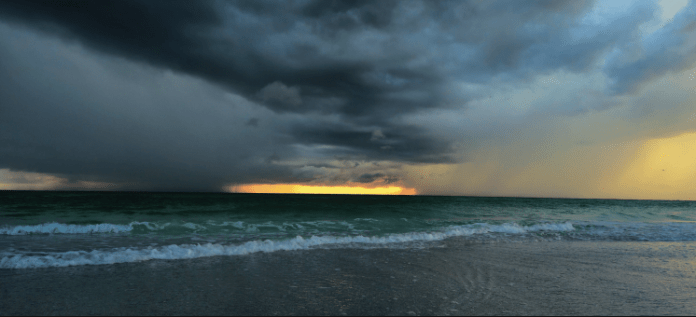STEVE REID
Editor & Publisher
sreid@lbknews.com
Mote Marine and most recently the Sarasota Bay Estuary Program have found dangerously high levels of bacteria and low levels of life-supporting oxygen in Sarasota Bay instigated by Tropical Storm Debby.
Just last week, Estuary Program Director David Tomasko said that four weeks after the storm, the open waters of Sarasota Bay to Siesta Drive to Venice Inlet “are out of compliance for fecal indicator bacteria, and should not be considered safe for recreational activities, such as swimming, jet skiing, wakeboarding, or any activity that could involve the participant accidentally ingesting water through their mouth or nose or entry of water via cut or scrape.”
This very unglamorous finding is followed by Tomasko in his report with a dirty laundry list of likely sources that include human sewage, bird and dog feces that was washed from the storm into the bay, and even decomposing seaweed. He noted that most of the human health risk from sewage contamination is from viruses which the National Institute of Health (NIH) confirms.
And then there is a compounding effect. Low levels of oxygen in the bay translate into a dying off of clams, fish and stingrays that then contribute to the bacterial load.
The good news is the northern bay near Palma Sola in Manatee County as well as south to Bird Key Park and the southern end of Longboat Key are considered “safe” according to the Florida Department of Health. Tomasko suggests the safest place to recreate until the water naturally circulates is in the Gulf of Mexico and on the Gulf beaches. The absolute worst place to swim, which should be intuitive, is by a storm drain, a dead end canal or a boat ramp.
Mote Scientist Dr. Emily Hall says, “Preliminary findings suggest that the storm (Debby) has had significant impact on water quality in Sarasota Bay. We are particularly concerned about the high nutrient and low dissolved oxygen concentrations, which could have serious implications for marine life in the affected areas.”
Turtles take a hit
In addition to the up to 18 inches of rainfall, the region experienced during Tropical Storm Debby, high tides and powerful waves washed out about 42 percent of the 2,958 nests that were bustling with hatchlings and eggs. As of last week, just over 1,100 active nests remained on the beach.
Why Longboat and Anna Maria Bay waters are clearer…
Tomasko focused much of its sampling on the lower bay from Stickney Point Bridge south to Venice because as he explains, there is much greater land mass draining into a much smaller area in the lower bay.
“The ratio between the amount of watershed and the open amount of water is close to ten times higher in the lower bay than in the upper bay. In the upper bay – except for Palma Sola Bay – there is a water exchange of about 80 percent after 10 days. In contrast, it takes about a month for the same amount of water exchange in Little Sarasota Bay,” said Tomasko.
In perspective
Scientists are reconstituting the traditional labels of an “once in a century” storm or rainfall event. Sarasota has had two events in the past two years that have produced rain beyond what the area stormwater infrastructure was designed to accommodate under the most severe conditions. On June 11 of this year, Sarasota experienced the most intense amount of rainfall it has recorded for the past 50 years. The local infrastructure is based on a ‘design storm’ of 10 inches of rain over 24 hours. That amount was far exceeded in both Tropical Storm Debby last month and Hurricane Ian in 2022.

